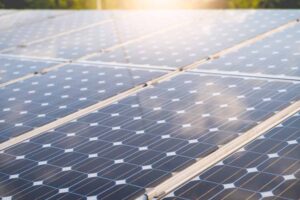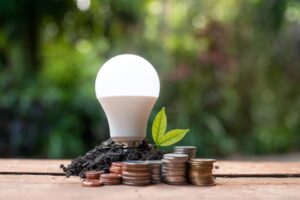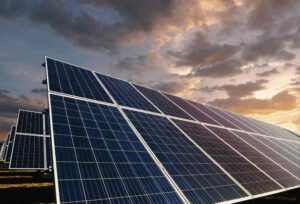Introduction to Energy Efficiency at Home
The Importance of Energy Efficiency
Energy efficiency isn’t just a buzzword; it’s a vital practice for modern living. With rising energy costs and growing environmental concerns, saving energy has become crucial. It’s not only about cutting costs but also about reducing our carbon footprint. Homes today consume vast amounts of energy, often unnecessarily. By adopting energy-efficient habits, we can make a significant impact.
Think of energy efficiency as a win-win situation. You save money on your energy bills, and you also contribute to a healthier planet. It’s about making small changes that collectively lead to substantial benefits. So, let’s dive into understanding how you can make your home more energy-efficient.
Overview of Common Energy Wastage
Energy wastage happens in many subtle ways. Unplugged devices still draw power, lights are left on in empty rooms, and old appliances consume more energy than necessary. These seemingly minor issues add up over time, leading to higher energy bills.
Consider the average household’s energy use. Heating and cooling account for about 50%, while water heating, lighting, and appliances take up the rest. Identifying these areas helps in targeting where to save energy. For example, adjusting your thermostat by just a few degrees can lead to significant savings.
Benefits of Saving Energy
The benefits of saving energy extend beyond financial savings. Reduced energy consumption means fewer greenhouse gases, leading to a smaller carbon footprint. This is crucial in combating climate change. Moreover, energy-efficient homes are more comfortable, with consistent temperatures and improved air quality.
Saving energy also reduces the strain on power grids, especially during peak times. This can prevent blackouts and reduce the need for new power plants, which are costly and environmentally damaging. So, energy efficiency contributes to a more sustainable and resilient energy system.
Brief Overview of Tips
Here’s a sneak peek of what we’ll cover:
- Understanding your energy consumption to identify savings opportunities.
- Efficient use of appliances to reduce unnecessary energy use.
- Home insulation techniques to maintain a comfortable indoor climate.
- Smart lighting solutions to cut down on electricity bills.
- Renewable energy options like solar panels to harness natural energy.
- Behavioral changes to foster a culture of energy conservation.
- Government incentives to make energy efficiency more affordable.
Stay tuned as we explore these tips in detail, helping you transform your home into an energy-efficient haven.
Understanding Your Energy Consumption
Identifying Energy-Hungry Appliances
Some appliances are notorious for guzzling energy. Heating and cooling systems, water heaters, and refrigerators are among the top offenders. Identifying these can help you take targeted action to reduce energy use. For instance, upgrading to a more efficient refrigerator can save a significant amount of energy.
Appliances like ovens, washing machines, and dryers also consume a lot of energy. Using them wisely, such as washing clothes in cold water or baking multiple dishes at once, can make a big difference. Don’t forget smaller devices too, like chargers and gaming consoles, which, when left plugged in, continue to draw power.
How to Read Your Energy Bill
Understanding your energy bill is the first step to managing consumption. Most bills provide a breakdown of energy use, showing how much you’re using and what it costs. Look for details like peak usage times and compare your consumption to previous months or years.
Pay attention to any additional charges or fees. Some providers charge extra during peak hours, so shifting some activities to off-peak times can save money. Knowing how to read your bill can also help you spot unusual spikes in usage, which might indicate a problem or inefficiency.
Seasonal Energy Consumption
Energy use fluctuates with the seasons. In winter, heating accounts for a large portion of your bill, while in summer, cooling does. Understanding these patterns helps in planning and implementing seasonal energy-saving strategies.
For example, in winter, ensure your heating system is efficient and your home is well-insulated. In summer, use fans and natural ventilation before turning on the air conditioning. By adjusting your habits according to the season, you can reduce your overall energy consumption.
The Impact of Lifestyle on Energy Use
Your lifestyle plays a significant role in energy consumption. For instance, if you work from home, your energy use is likely higher. Similarly, a large family with multiple devices will consume more energy than a smaller household.
Consider your daily routines and how they affect energy use. Simple changes, like unplugging devices when not in use or using energy-saving settings on appliances, can lead to substantial savings. It’s about being mindful of your energy habits and making conscious choices to reduce consumption.
Energy-Saving Tips for Appliances
Efficient Use of Kitchen Appliances
Kitchen appliances are some of the biggest energy consumers in a home. Here are some tips to use them more efficiently:
- Refrigerator: Keep it at the recommended temperature (37-40°F for the fridge, 0°F for the freezer). Ensure the door seals are tight and clean the coils regularly.
- Oven and Stove: Use the microwave or toaster oven for smaller meals. When using the stove, match the pot size to the burner.
- Dishwasher: Run full loads and use the energy-saving mode. Let dishes air dry instead of using the heated dry function.
Energy-Saving Tips for Laundry
Laundry is another area where you can save energy. Here’s how:
- Washing Machine: Use cold water whenever possible. Wash full loads, but don’t overload the machine.
- Dryer: Clean the lint filter after each use. Dry similar types of fabrics together and consider air drying when possible.
- Iron: Iron in large batches at once to avoid reheating. Use the right temperature setting for each fabric.
Optimizing Heating and Cooling Systems
Heating and cooling are major energy expenses. Optimize these systems with the following tips:
- Thermostat: Use a programmable thermostat to adjust temperatures based on your schedule. Lower the temperature when you’re not home or at night.
- Maintenance: Regularly service your HVAC system to ensure it’s running efficiently. Replace filters as recommended.
- Zoning: If possible, use zoning systems to heat or cool only the areas you’re using.
Smart Usage of Entertainment Devices
Entertainment devices, such as TVs, gaming consoles, and computers, can add up in energy costs. Consider these tips:
- Power Strips: Use smart power strips to prevent phantom energy use. These strips can automatically shut off power when devices are not in use.
- Settings: Adjust settings to energy-saving modes. Lower screen brightness and turn off devices when not in use.
- Timers: Use timers to automatically turn off devices at certain times.
Home Insulation and Sealing
The Role of Insulation in Energy Efficiency
Insulation is key to maintaining a comfortable home temperature and reducing energy costs. Proper insulation prevents heat loss in winter and keeps your home cool in summer. It’s one of the most effective ways to improve energy efficiency.
Insulating your attic, walls, and floors can make a huge difference. It helps maintain a consistent temperature, reducing the need for heating and cooling. This, in turn, lowers your energy bills and creates a more comfortable living environment.
Types of Insulation Materials
There are various types of insulation materials, each with its benefits:
- Fiberglass: Widely used and affordable. It’s good for attics, walls, and floors.
- Foam Board: Provides high insulation value with minimal thickness. Ideal for unfinished walls and floors.
- Spray Foam: Expands to fill gaps and cracks. Great for hard-to-reach areas and sealing air leaks.
- Cellulose: Made from recycled paper. It’s eco-friendly and effective for attics and walls.
Sealing Windows and Doors
Windows and doors are common sources of air leaks. Sealing these areas can significantly improve energy efficiency:
- Weatherstripping: Apply weatherstripping around windows and doors to prevent drafts.
- Caulking: Use caulk to seal gaps and cracks around windows and doors.
- Draft Stoppers: Place draft stoppers at the base of doors to block cold air.
DIY Insulation Tips
You don’t always need a professional to improve your home’s insulation. Here are some DIY tips:
- Install Weatherstripping: Easy to apply and available at most hardware stores.
- Use Window Film: Apply insulating film to windows to reduce heat loss.
- Seal Attic Hatch: Use weatherstripping or a foam board to insulate your attic hatch.
Lighting Solutions for Energy Savings
Benefits of LED Lighting
LED lights are the gold standard for energy efficiency. They use up to 80% less energy than traditional incandescent bulbs and last much longer. This means fewer replacements and lower energy bills.
LEDs also produce less heat, reducing the load on your cooling system in the summer. They are available in various colours and brightness levels, making them suitable for any room in your home.
Smart Lighting Systems
Smart lighting systems offer convenience and energy savings. These systems allow you to control your lights remotely via smartphone apps or voice assistants. You can schedule lights to turn off when not needed, reducing energy waste.
Motion sensors are another smart option. They automatically turn lights on when someone enters a room and off when the room is empty. This ensures lights are only used when necessary.
Natural Lighting Utilization
Maximizing natural light is an excellent way to save energy. Here are some tips:
- Windows: Keep windows clean to allow maximum light. Use light-coloured curtains to reflect more light.
- Mirrors: Place mirrors strategically to reflect natural light into darker areas.
- Skylights: Consider installing skylights to bring in more natural light, especially in areas like hallways and bathrooms.
Tips for Outdoor Lighting
Outdoor lighting can also be energy-efficient. Here’s how:
- Solar Lights: Use solar-powered lights for pathways and gardens. They charge during the day and illuminate at night.
- Motion Sensors: Install motion sensor lights for security and convenience. They only turn on when motion is detected.
- LED Bulbs: Replace outdoor incandescent bulbs with LED alternatives. They last longer and use less energy.
Renewable Energy Solutions
Solar Panel Installation
Solar panels are a popular renewable energy solution. They convert sunlight into electricity, reducing your reliance on grid power. Here’s what you need to know:
- Installation: Solar panels are typically installed on the roof. Ensure your roof is in good condition and receives adequate sunlight.
- Cost: While the initial investment is high, many governments offer incentives and rebates to offset costs.
- Maintenance: Solar panels require minimal maintenance. Regular cleaning and periodic inspections are usually sufficient.
Wind Energy for Homes
Wind energy is another renewable option, though less common for residential use. Small wind turbines can be installed on your property to generate electricity. Consider these points:
- Location: Wind turbines require a location with consistent wind. Rural areas are often more suitable.
- Size: Small turbines are available for residential use, but they still need space to operate efficiently.
- Cost: Like solar, wind turbines have a high upfront cost but can pay off in the long run through energy savings.
Geothermal Heating and Cooling
Geothermal systems use the stable temperature of the earth to heat and cool your home. They are highly efficient and environmentally friendly. Here’s what you need to know:
- Installation: Geothermal systems require underground pipes, which can be costly to install.
- Efficiency: These systems are very efficient, providing significant energy savings over time.
- Maintenance: Regular maintenance ensures the system runs efficiently. This typically involves checking the pipes and heat pump.
Integrating Renewable Energy with Existing Systems
Integrating renewable energy solutions with your existing systems can maximize benefits. Here are some tips:
- Hybrid Systems: Combine solar panels with a traditional grid connection to ensure a reliable power supply.
- Energy Storage: Use batteries to store excess energy generated by solar panels or wind turbines. This ensures you have power even when the sun isn’t shining or the wind isn’t blowing.
- Smart Management: Use smart home systems to manage your energy use. These systems can optimize the use of renewable energy and reduce reliance on the grid.
Behavioural Changes for Energy Savings
Habits that Reduce Energy Consumption
Changing daily habits can significantly reduce energy consumption. Here are some simple changes:
- Turn Off Lights: Always turn off lights when leaving a room.
- Unplug Devices: Unplug chargers and devices when not in use.
- Use Energy-Saving Modes: Set appliances to energy-saving modes.
Family Involvement in Energy-Saving
Getting the whole family involved can amplify energy-saving efforts. Here are some tips:
- Education: Teach children about the importance of saving energy.
- Challenges: Make it fun by creating family challenges to see who can save the most energy.
- Rewards: Offer rewards for consistent energy-saving efforts.
Energy-Efficient Home Office Tips
With more people working from home, the home office has become a significant energy consumer. Here are some tips:
- Natural Light: Set up your workspace near windows to maximize natural light.
- Power Strips: Use smart power strips to easily turn off multiple devices.
- Energy-Efficient Equipment: Choose energy-efficient computers, monitors, and other office equipment.
Monitoring and Adjusting Energy Use
Regularly monitoring your energy use helps identify opportunities for savings. Here are some strategies:
- Energy Monitors: Use energy monitors to track your consumption in real time.
- Adjustments: Make adjustments based on your monitoring. For example, if you notice high energy use at certain times, change your habits to reduce it.
- Feedback: Share feedback with your family to keep everyone informed and motivated.
Government Incentives and Rebates
Understanding Energy Incentives
Many governments offer incentives to encourage energy efficiency. These can include tax credits, rebates, and grants. Understanding these incentives can help offset the cost of energy-efficient upgrades.
How to Apply for Rebates
Applying for rebates can be straightforward if you follow these steps:
- Research: Look up available rebates in your area. Check government websites and local utility companies.
- Documentation: Keep all receipts and documentation for your energy-efficient purchases and installations.
- Submit: Submit your application along with the required documentation. Follow up if necessary to ensure your application is processed.
Local vs Federal Programs
Both local and federal programs offer energy incentives. Here’s how they differ:
- Local Programs: These are often provided by utility companies or local governments. They can include rebates for specific appliances or home improvements.
- Federal Programs: These are typically broader and offer larger incentives. They can include tax credits for renewable energy installations and energy-efficient home improvements.
Conclusion
Recap of Key Points
We’ve covered a lot of ground in this blog post. From understanding your energy consumption to implementing energy-saving tips, and exploring renewable energy options, you now have a comprehensive guide to making your home more energy-efficient.
Long-Term Benefits of Energy Efficiency
The long-term benefits of energy efficiency are significant. Lower energy bills, reduced environmental impact, and a more comfortable home are just the beginning. Over time, these efforts contribute to a more sustainable future for everyone.
Encouragement for Action
Now it’s time to take action. Start with small changes and gradually implement more significant improvements. Every step you take brings you closer to a more energy-efficient home.
Final Thoughts
Energy efficiency is a journey, not a destination. Keep exploring new ways to save energy and stay informed about the latest technologies and incentives. Together, we can make a difference.
FAQs
What are the easiest ways to save energy at home?
- Unplug devices: Avoid phantom energy use.
- Use LED lights: They are more efficient and last longer.
- Adjust thermostat: Lower it in winter and raise it in summer.
How much can I save on my energy bill with these tips?
- Varies by household: Savings depend on your current energy use and the changes you make.
- Average savings: Many households can save up to 20% on their energy bills.
Are renewable energy solutions worth the investment?
- Long-term benefits: Renewable energy solutions can significantly reduce your energy bills over time.
- Incentives: Government incentives can help offset the initial costs.
What government incentives are available for energy efficiency?
- Federal tax credits: Many governments offer tax credits for installing renewable energy systems like solar panels and geothermal heat pumps.
- Local rebates: Check with your local utility company for rebates on energy-efficient appliances and home improvements.
- Grants: Some programs provide grants to help cover the cost of major energy-efficient upgrades.
How do I start implementing these tips?
- Assess your current energy use: Understand where you are using the most energy.
- Start small: Begin with easy changes, like switching to LED lights or unplugging devices.
- Plan larger projects: Research and plan for bigger improvements, such as insulation upgrades or installing renewable energy systems.






